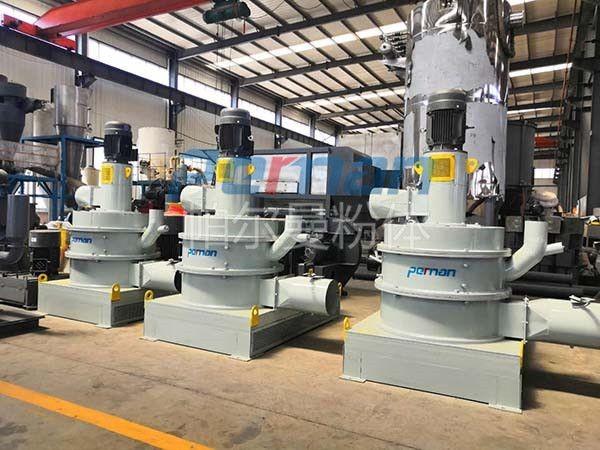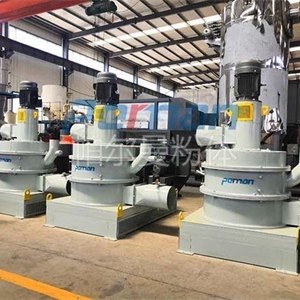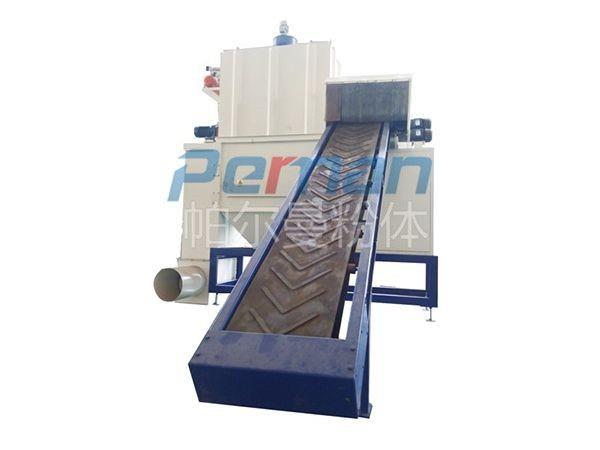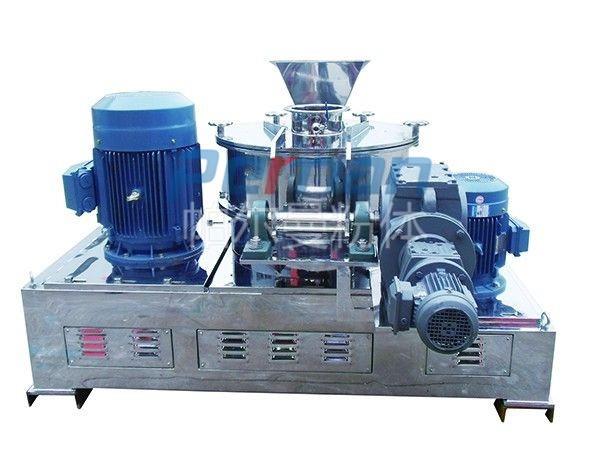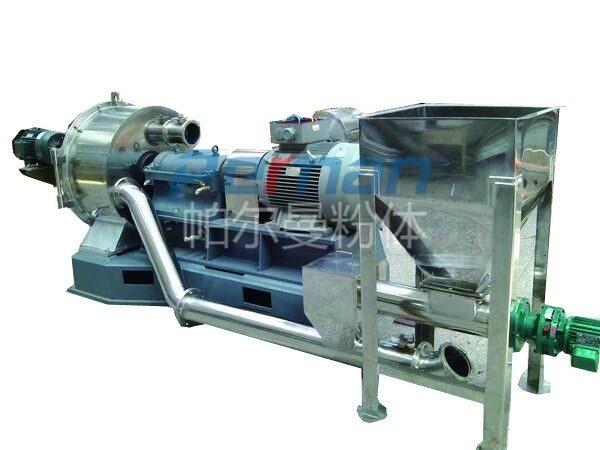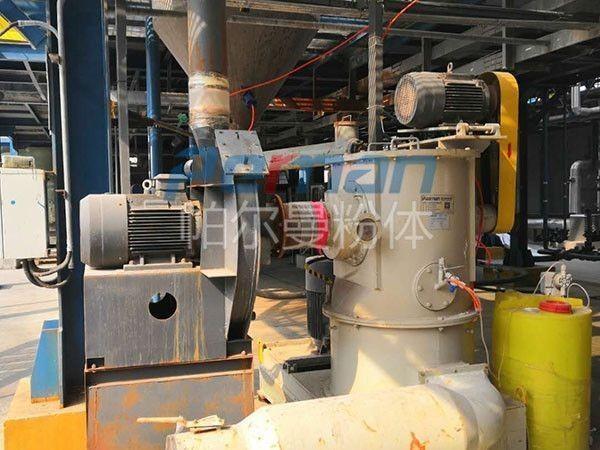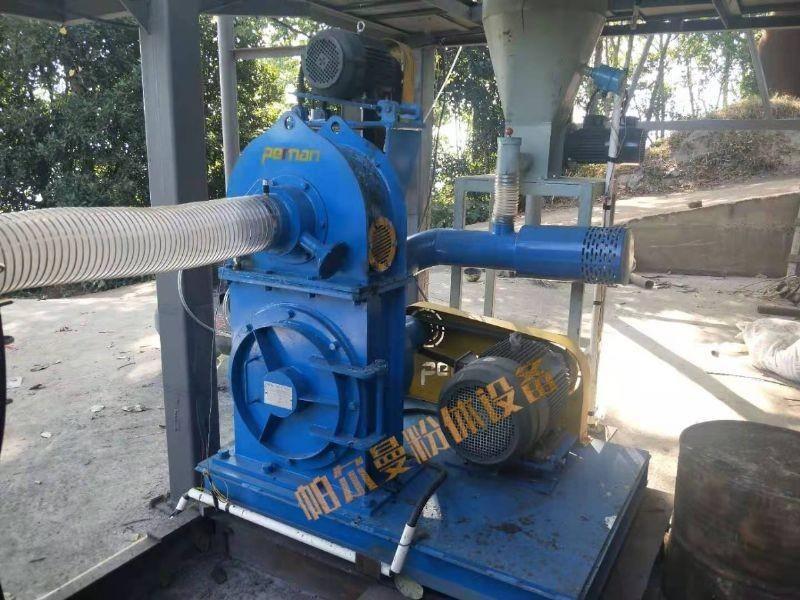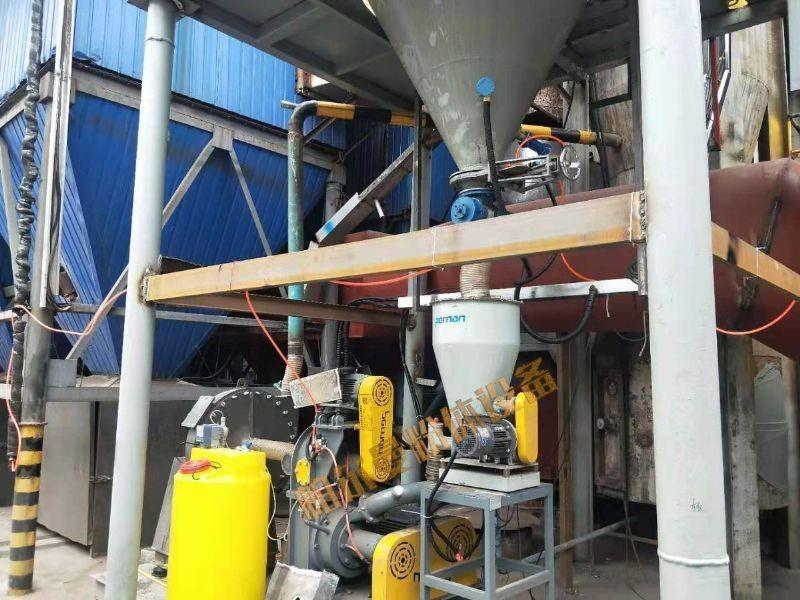CAM-V Hazardous Waste Baking Soda Crusher
Hazardous waste treatment, steel plant coke oven, thermal power generation, municipal waste, sludge incineration, non-metallic ore, ceramic industry, glass manufacturing
With the increasingly stringent requirements of environmental protection laws and regulations, Perlman's process based on the principle of dry deacidification of baking soda developed in combination with advanced processes in Europe and the United States has been applied more and more. The dry method using sodium bicarbonate as the adsorbent adsorbs and removes various pollutants contained in the flue gas. Its purification effect can be compared with other known methods, such as the spray adsorption method using lime milk as the adsorbent. Dry flue gas purification can be used not only in coal power plants, hazardous waste treatment, municipal waste or alternative fuel incineration plants, but also in industrial furnaces in glass, cement, metallurgy and other industries. Dry flue gas purification can economically remove gases containing acidic substances, such as SO2, HCI, etc., and meet the national standard for flue gas emission.
The flue gas contains a lot of acidic gas. After a lot of data and experiments, only sodium bicarbonate (baking soda, NaHCO3) can react with the acidic components in the flue gas to a certain degree. It removes acidic pollutants in the flue gas through chemical adsorption, and it can also remove some inorganic and organic trace substances through physical adsorption. This process sprays fine sodium bicarbonate powder directly into the high-temperature flue gas. At high temperatures, sodium bicarbonate decomposes to produce sodium carbonate Na2CO3, H2O and CO2.
Generally, the flue gas temperature is between 140 and 250 °C. Due to the high activity of the sodium bicarbonate adsorbent, a slight excess of sodium bicarbonate (stoichiometric factor between 1.1 and 1.3) is usually sufficient.
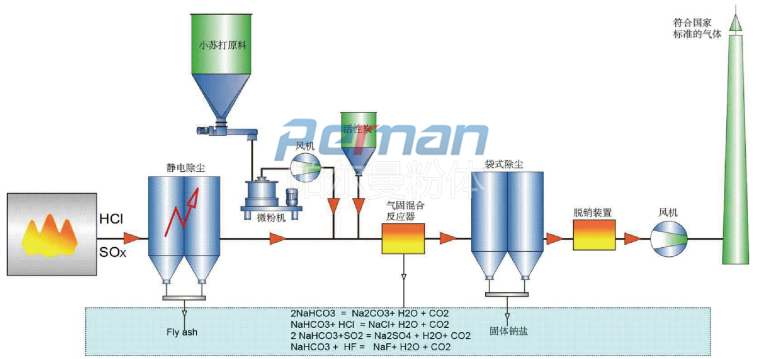
The particle requirements are related to the components in the flue gas, and the required particle size for the removal of SO2 and HCl will be different. Due to transportation and storage reasons, sodium bicarbonate raw materials are usually coarse particles (d50 value of about 200 microns). To achieve higher reactivity, the adsorbent must have a larger specific surface area. Therefore, the sodium bicarbonate must be ground to a certain degree of fineness before being injected into the flue gas pipe. For example, the fineness of sodium bicarbonate must reach d90 <20 µm to remove SO2. The removal of HCl only requires d90 <35 µm. If the system is operated correctly, it can remove more than 95% of SO2; the removal rate of HCl can even reach 99%. In order to maintain the required fineness of sodium bicarbonate during long-term operation, after grinding with an air grinder, the adsorbent is transported by gas transportation and directly passed into the flue gas pipe through multiple nozzles to ensure that it is evenly dispersed in the pipe. . The design of this equipment is simple and durable. Compared with other flue gas purification methods, its investment and operating costs are lower.
Sodium bicarbonate grinding process will be the core process of this technology.
CAM-V series internal grading mill (vertical grading) is a kind of micro powder production equipment with super subdivision function, which belongs to the same type of model as foreign ACM. This machine is mainly suitable for crushing materials with a hardness of less than 3.5 on the Mohs level, and can obtain ultra-fine powders of 5~150um, and a large flow of cooling gas can be used for crushing heat sensitive materials.
Performance characteristics:
1. This machine has a built-in classifier instead of the traditional screen to adjust the fineness.
2. By adjusting the speed of the grading impeller, the particle size of the product can be adjusted without stopping the machine.
3. The powerful pulverizing airflow of the system produces strong cooling function during pulverization, and the temperature rise during pulverization is low. It is especially suitable for processing heat-sensitive and fibrous materials, and the product size is uniform.
4. The bearings and transmission belt adopt imported parts and have a long service life.
5. According to the characteristics of the material, the crushing parts and classification parts are specially designed, and the general-purpose crusher is upgraded to a special-purpose crusher to further improve the crushing efficiency.
6. It is suitable for the crushing of materials with low to medium hardness (under Mohs level 3.5), and the material and structure customization should be improved for special materials.
Components:
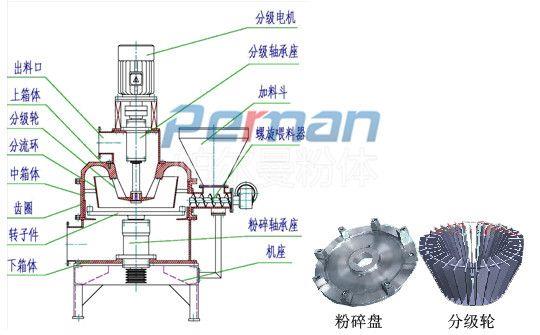
Related Products
Related cases
Online customization
Quality creates value

